Offline CNC Makes
Precision Productive
Relieving the control of its calculation burden speeds production of complex, mirror-finish components machined with diamond tools.
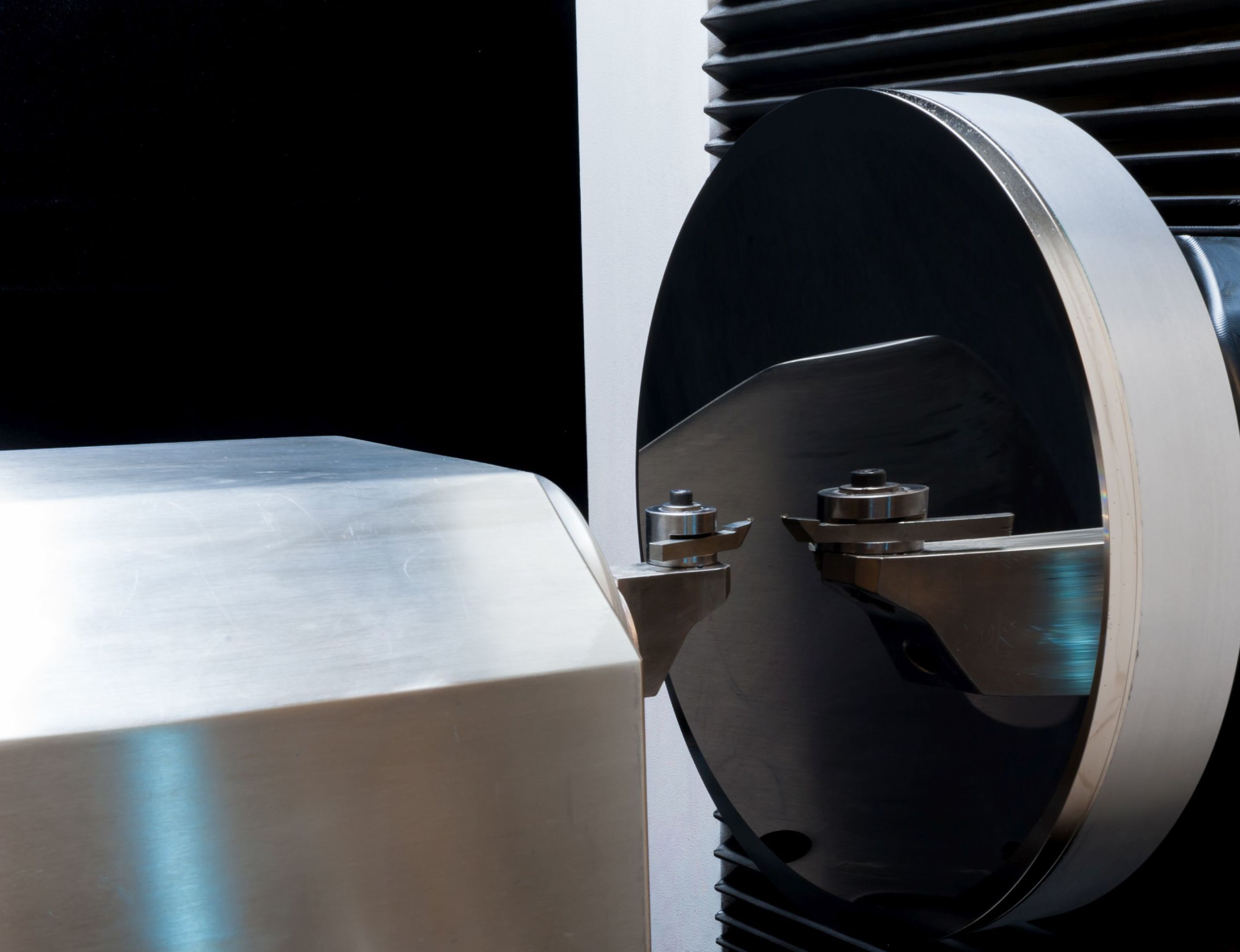
Lenses, mirrors, optics and the mold inserts that enable making such parts at scale have long been machined with tools made of solid diamond. Despite a well-deserved reputation for precision, however, diamond machining can be painstakingly slow, says Dr. Christian Wenzel, CEO of diamond machine tool builder Innolite.
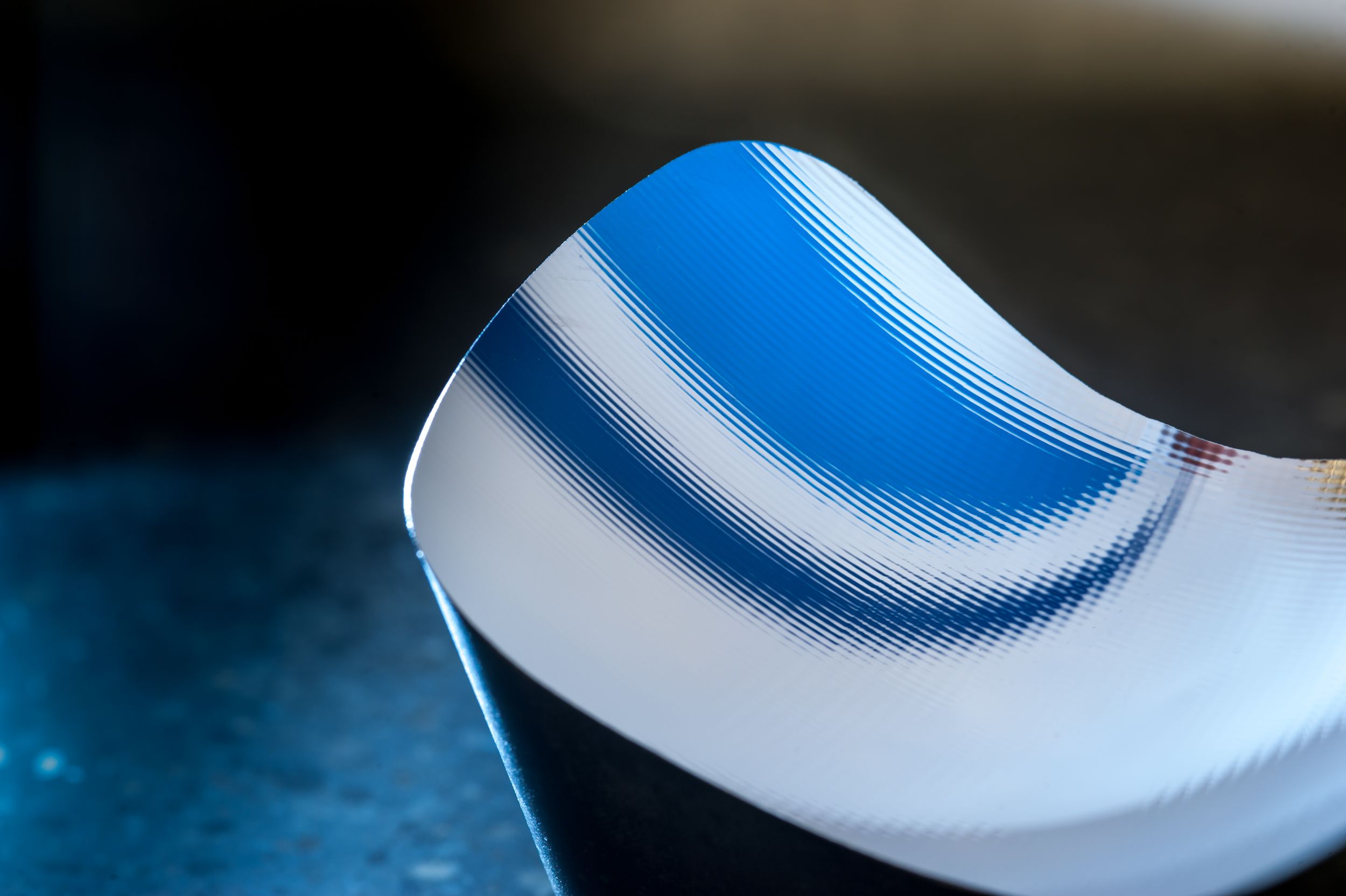
LED Headlight insert molds like this one are driving demand for increased diamond machining productivity. All photos and video courtesy of Innolite.
When surface form accuracy is measured in microns and roughness is measured in nanometers, the CNC becomes a bottleneck, he explains. In any application, fluid, precise motion depends on lookahead functionality to scout ahead of the cutter and ensure ample reaction time to adverse conditions, all while the control is simultaneously engaged in other tasks. Diamond machining applications can require plotting motion in such detail that slowing down is the only way for the CNC to keep up.
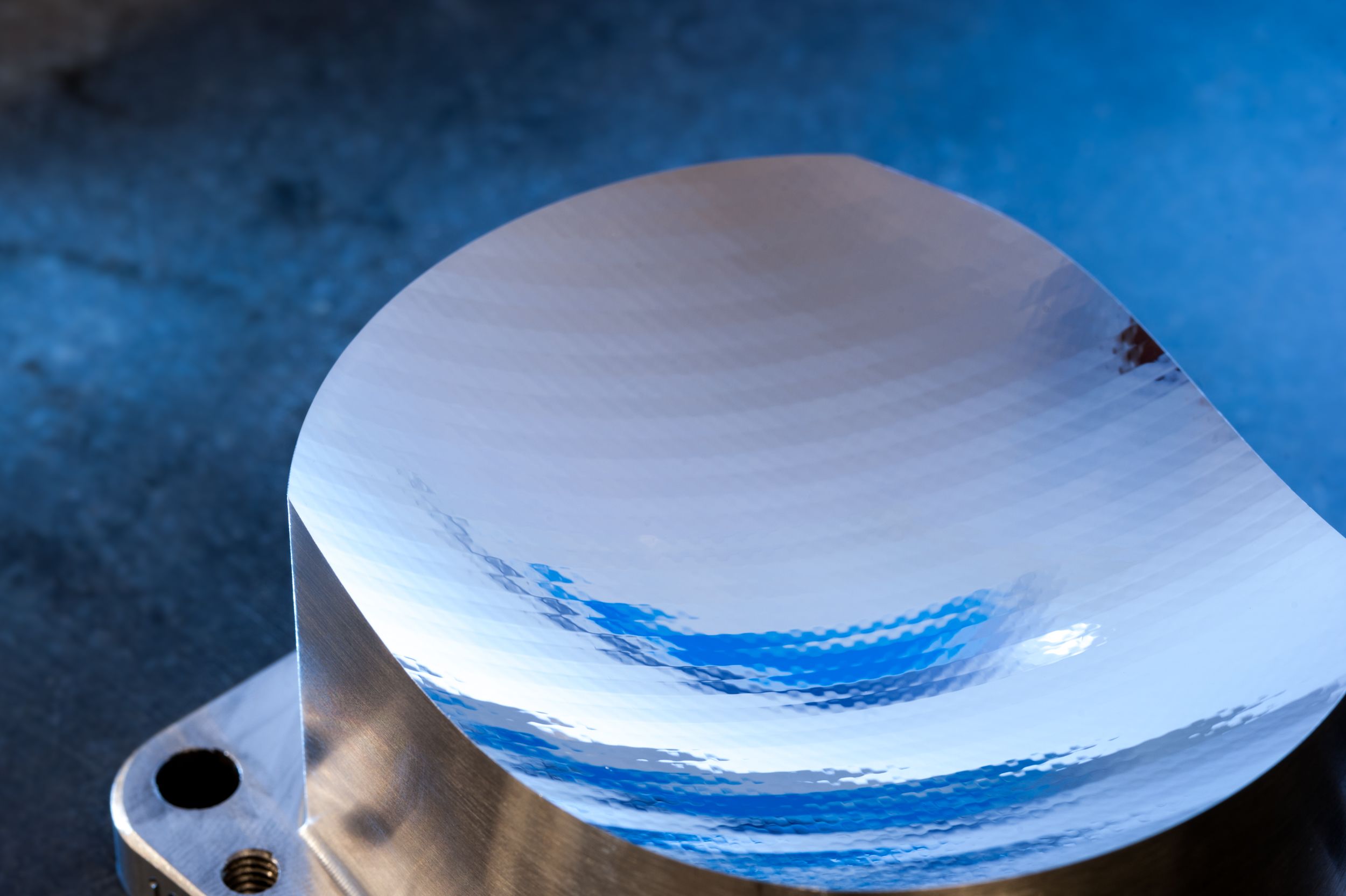
Machined directly in steel, LED headlight mold inserts require layering ridges and other microstructures directly atop complex, contoured surfaces.
Innolite machines work differently. Rather than relying on the CNC to work while the machine runs, the company’s DirectDrive3D software calculates the entire tool path offline, before the cycle begins. Moving the work of the CNC offline eliminates the need for (and the delays associated with) in-process CNC look ahead. Meanwhile, a decentralized servo-system architecture ensures the machine can respond dynamically enough to execute high-resolution toolpath data without compromising efficiency. “We want to make diamond turning productive as well as precise,” Dr. Wenzel says. “The market demands it.”

LED Headlight insert molds like this one are driving demand for increased diamond machining productivity. All photos and video courtesy of Innolite.
LED Headlight insert molds like this one are driving demand for increased diamond machining productivity. All photos and video courtesy of Innolite.

Machined directly in steel, LED headlight mold inserts require layering ridges and other microstructures directly atop complex, contoured surfaces.
Machined directly in steel, LED headlight mold inserts require layering ridges and other microstructures directly atop complex, contoured surfaces.
Rough to the Micron, Finish to the Nanometer
Dr. Wenzel often refers to “diamond turning” because turning is the most common operation in diamond machining. However, Innolite systems like the IL600 are also capable of milling, ruling, fly-cutting and grinding. On this machine, the workholding spindle moves back and forth in Z and up and down in Y to present spinning parts to cutting tools and measurement equipment on the opposing X-axis slide. Periodic checks with both contact and non-contact probes keep the process on track, as do various temperature-control systems and hydrostatic, linear-motor driven axes leveraging high-resolution optical scales. With cutting edges so sharp—some turning insert edge radii measure only 20 nanometers—“everything must be perfect,” Dr. Wenzel says about the need for such features. “If you take a hair and cut it into 1,000 pieces, then take one of those pieces and cut it into four, that’s what we’re working with.”
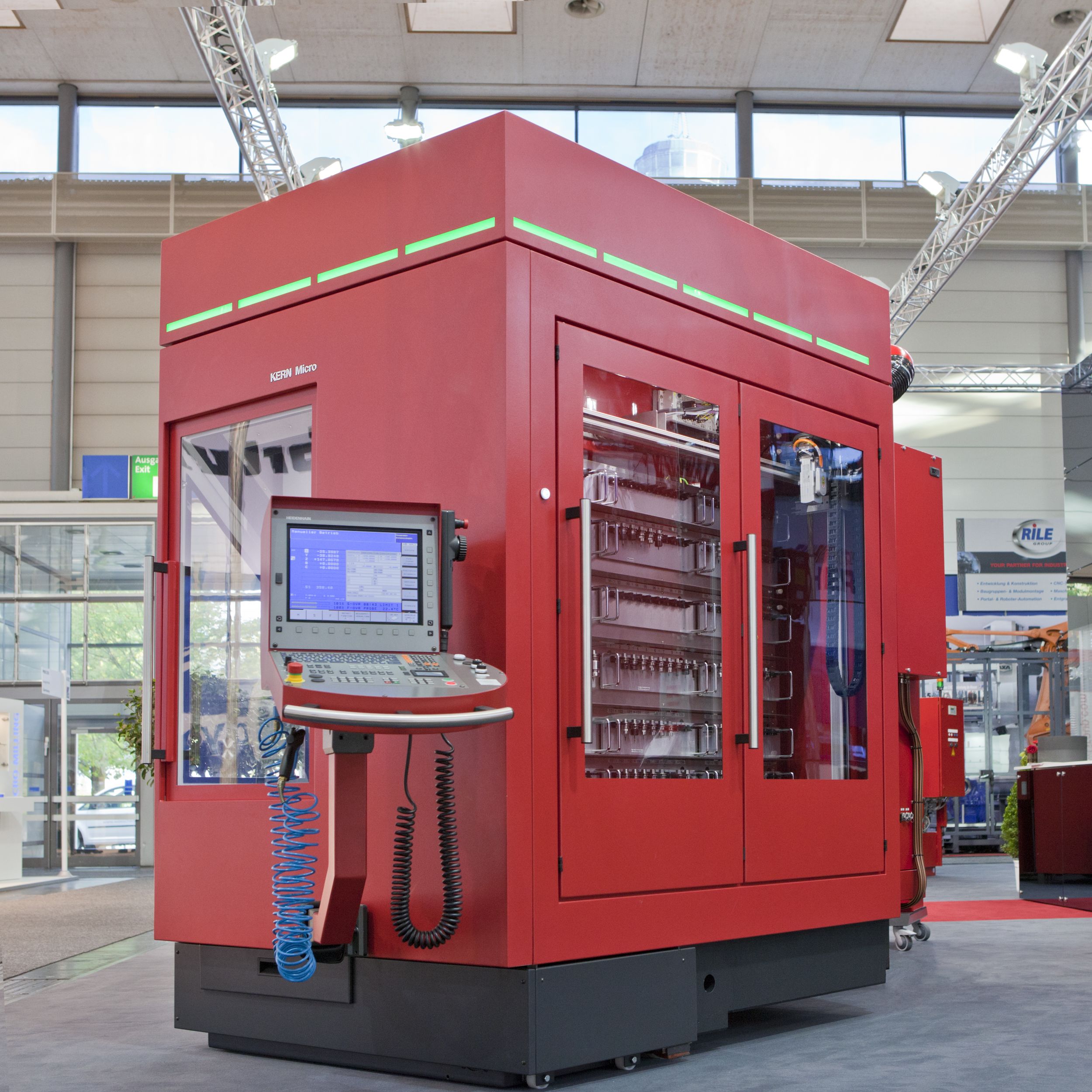
Kern machines like this Micro are recommended for providing the productive, precise milling required to limit the need for diamond turning in the first place. This photo was taken at Kern's headquarters in Germany where, like Innolite, the company produces parts as well as machine tools.
Innolite equipment is available in North America as of late last year through Kern Precision, the Chicago-based U.S. arm of fellow German machine tool builder and long-term partner Kern Microtechnik. The two companies’ motivation here is the same as it is in their home market: to help manufacturers of parts with optical-quality surface finish adapt to the unfamiliar demands of new applications, particularly in the automotive industry.
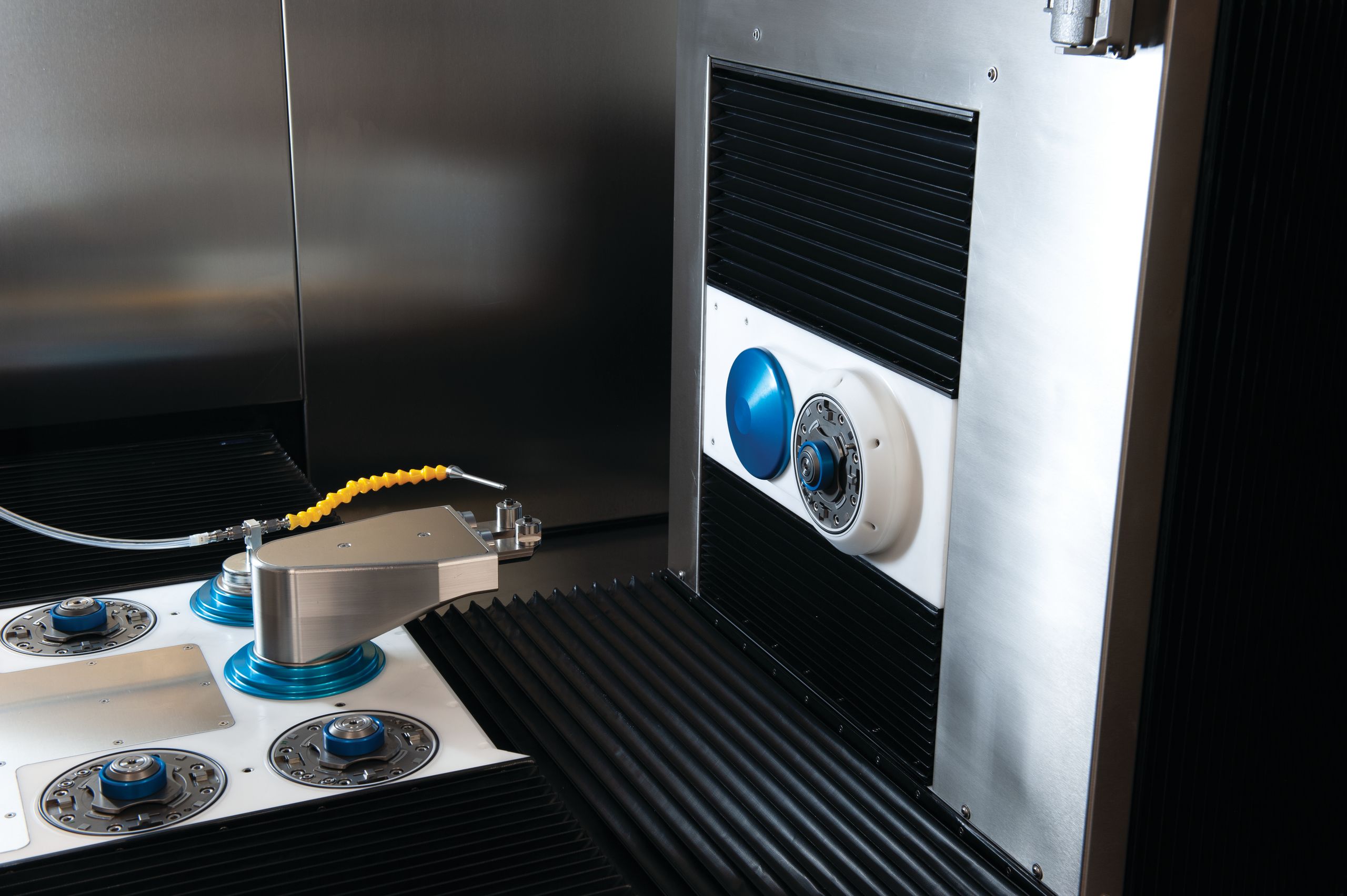
The Innolite IL600 can be configured as needed with various tooling and gaging stations. Options include the Overdrive unit, milling spindles, and more. Machines can employ Nano-Grip zero-point clamping modules for easy changeover of tools and workpieces alike.
Diamond turning is traditionally associated defense- and research-related work, such as missile or satellite guidance system optics. Such parts are expensive, application-critical and difficult to manufacture. However, a contract for an automobile rain sensor, or a mold for an LED headlight or a contact lens, requires prioritizing more than quality and precision, Dr. Wenzel says. New customers demand increased part volumes, faster deliveries and greater geometric variety.
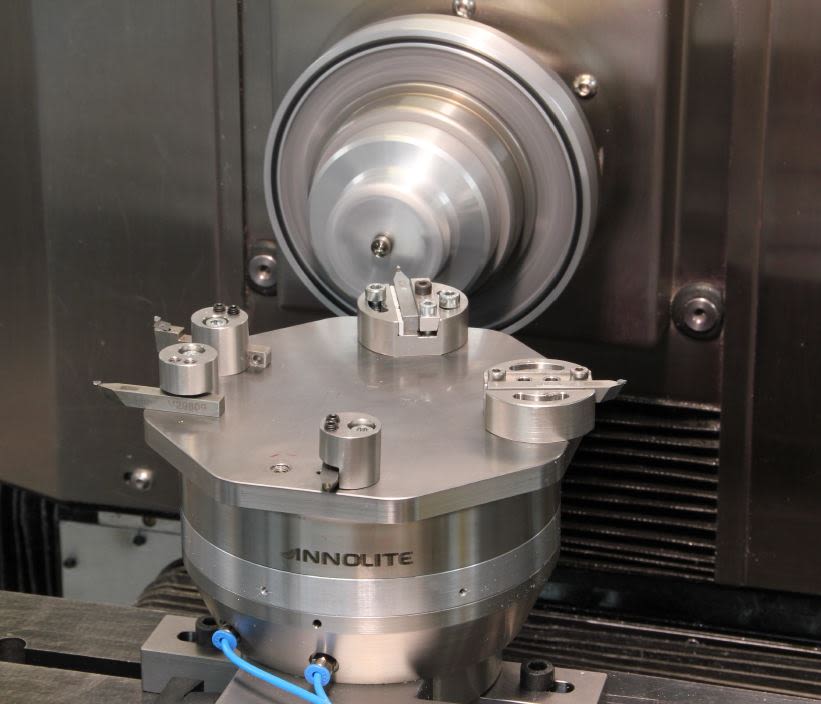
The Nanogrip zero-point clamping system's modular design enables users to quickly and easily swap not only workpieces, but also various, multi-station configurations of cutting and measuring tools. Additionally, parts can be moved from Kern machines to Innolite machines without losing location references.
The first step in meeting this demand is changing old habits. To that end, Innolite and Kern offer Nanogrip, a spring-loaded, zero-point clamping system that enables swapping entire pallets of fixtures and cutting/measuring tools in seconds with no need for realignment. Repeatability is less than half a micron. Well-established in more conventional machining operations, such a system represents new thinking for diamond turning operations where painstaking, manual setup of tools and parts in vacuum chucks is common practice. Dr. Wenzel says.
The system also eases transfer of pallets from the three- and five-axis Kern milling machines recommended for “roughing,” which in this case can require machining surface profiles and shapes with peak-to-valley accuracy of less than ±10 microns. “Diamond turning is not very productive compared to conventional milling,” Dr. Wenzel says. “A Kern machine is going to be superb for providing the repeatability and accuracy required to limit the need for diamond turning in the first place.” However little diamond turning is required, Innolite’s DirectDrive3D offline CNC system ensures it proceeds as fast as possible.

Kern machines like this Micro are recommended for providing the productive, precise milling required to limit the need for diamond turning in the first place. This photo was taken at Kern's headquarters in Germany where, like Innolite, the company produces parts as well as machine tools.
Kern machines like this Micro are recommended for providing the productive, precise milling required to limit the need for diamond turning in the first place. This photo was taken at Kern's headquarters in Germany where, like Innolite, the company produces parts as well as machine tools.

The Innolite IL600 can be configured as needed with various tooling and gaging stations. Options include the Overdrive unit, milling spindles, and more. Machines can employ Nano-Grip zero-point clamping modules for easy changeover of tools and workpieces alike.
The Innolite IL600 can be configured as needed with various tooling and gaging stations. Options include the Overdrive unit, milling spindles, and more. Machines can employ Nano-Grip zero-point clamping modules for easy changeover of tools and workpieces alike.

The Nanogrip zero-point clamping system's modular design enables users to quickly and easily swap not only workpieces, but also various, multi-station configurations of cutting and measuring tools. Additionally, parts can be moved from Kern machines to Innolite machines without losing location references.
The Nanogrip zero-point clamping system's modular design enables users to quickly and easily swap not only workpieces, but also various, multi-station configurations of cutting and measuring tools. Additionally, parts can be moved from Kern machines to Innolite machines without losing location references.
Lookahead Is No Limit
Stringent specifications for precision and surface finish are not enough to make the CNC a bottleneck to efficiency, Dr. Wenzel says. Geometry creates the problem. If a turning insert is to machine non-rotationally symmetrical, freeform curvature and complex 3D shapes into the face of a spinning part, it cannot stay in one plane, like a needle on a record player. Following along the hills and valleys of the spiraling tool path requires moving in and out in Z in perfect synchronization with the main spindle’s rotation. However this functionality is achieved, oscillating the tool is a demanding task for an already busy CNC.

The burden on the CNC is due more to the intricacy of diamond turned microstructures like these than stringent requirements for surface finish and precision.
More specifically, even the most powerful computer can only handle so many set points—the points in space that approximate the curves and contours of a tool path—in so much time. Spacing the set points closer together enables smoother tool motion around smaller, more complex shapes, but a CNC must work harder to plot that motion, particularly if real-time lookahead is required to ensure fluid point-to-point transitions. Beyond a certain number of set points (typically a few thousand), a conventional machine tool CNC must slow down to allow time for processing.
DirectDrive3D outputs the same information as any CNC: Coordinated motion profiles for each individual axis, all precisely timed to ensure the tool follows the intended path. However, these calculations are performed offline, before the cycle starts. With no need to look ahead, there is no need for the CNC to slow down.
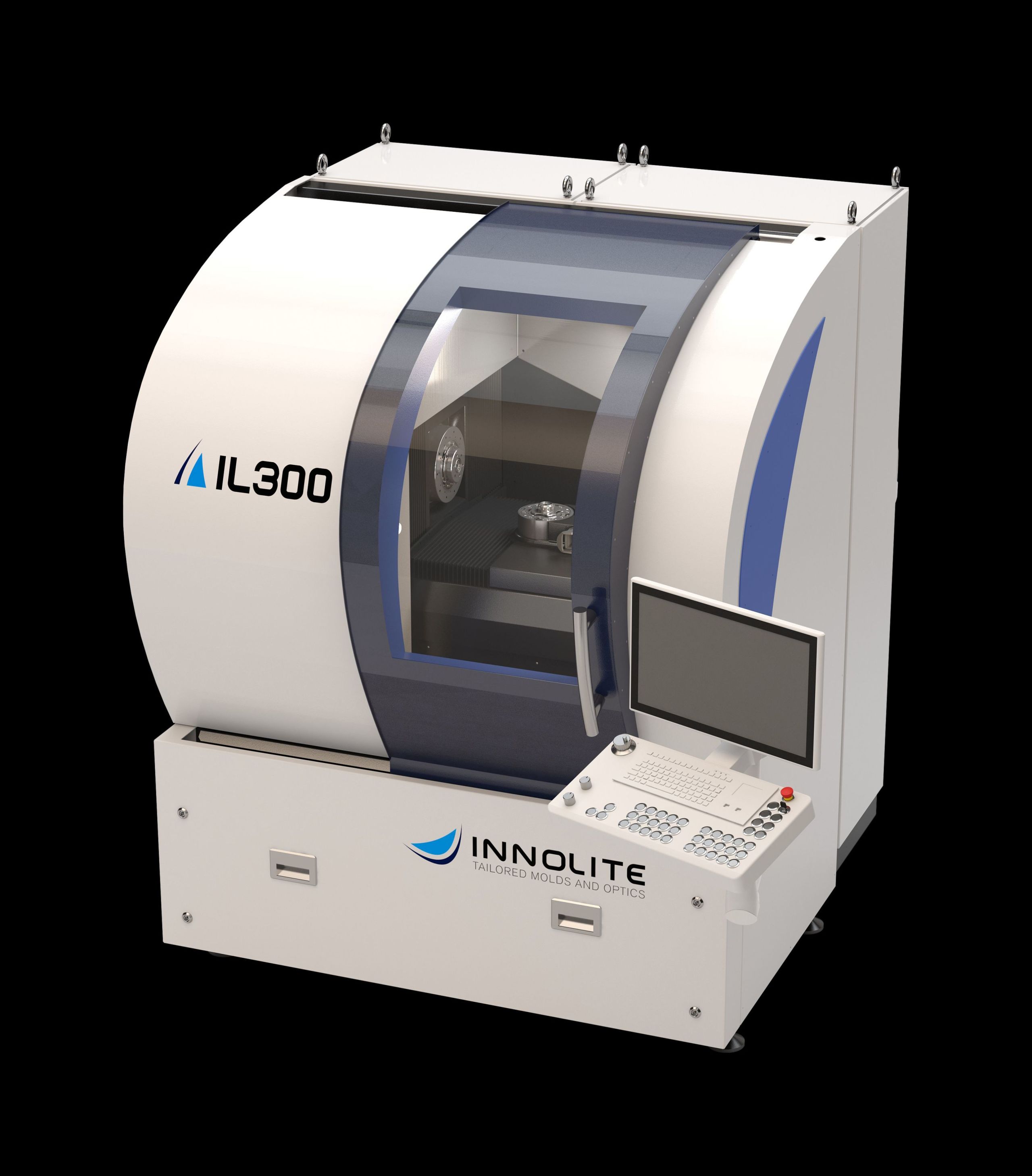
The IL300 is designed for standard diamond turning as well as free-form and micro structure generation. ILSONIC models use ultrasonic assistance to diamond-turn steel and infrared materials.
Granted, any CNC could theoretically calculate any number of toolpath set points offline. The problem is that calculations take time—enough time to make doing the work in advance impractical. In one experiment, the company used a conventional CNC in offline mode to calculate the tool path for an LED headlight lens mold. With no need for lookahead to scout ahead of the tool in real time, the system ran at 10 kilohertz (khz)—that is, it was tasked with processing 10,000 toolpath set points per second. The calculations took more than 12 hours.
In contrast, DirectDrive3D did the same work in less than 10 minutes. The difference between the two systems is how the calculations are performed, Dr. Wenzel explains. Running offline enables DirectDrive3D to use parallel processing, or the division of computing tasks among multiple cores (processing units). In contrast, CNC algorithms designed to work while the machine runs use a single core because the calculations are derivative—that is, adjustments made on the way to one toolpath set point can affect how the CNC might react when it responds to the next. “In the end we’re doing the same thing (as a CNC), but because we don’t need the online functionality, we can use different math and parallelize calculations,” Dr. Wenzel says.

The burden on the CNC is due more to the intricacy of diamond turned microstructures like these than stringent requirements for surface finish and precision.
The burden on the CNC is due more to the intricacy of diamond turned microstructures like these than stringent requirements for surface finish and precision.

The IL300 is designed for standard diamond turning as well as free-form and micro structure generation. ILSONIC models use ultrasonic assistance to diamond-turn steel and infrared materials.
The IL300 is designed for standard diamond turning as well as free-form and micro structure generation. ILSONIC models use ultrasonic assistance to diamond-turn steel and infrared materials.
Dynamic Servo Response
With the CNC freed from much of its calculation burden, the bottleneck shifts to the drive system itself. Individual axes move via a feedback loop in which the motor adjusts power output as-needed based on periodic position checks from the encoder. Most machine tools use a centralized, PC-based system (often the CNC itself) to control and coordinate the axis positions, which are determined by precisely timed commands for position, speed, acceleration and jerk calculated from CAM data by the CNC (or by DirectDrive3D). If the coordinated feedback loops do not cycle fast enough, the machine cannot take full advantage of a system like DirectDrive3D, Dr. Wenzel says.
With speeds maxing out at 3 or 4 khz (that is, 3,000 to 4,000 set points per second), most PC-based position-control systems are too slow. “The handshake that occurs when the CNC calculates and sends commands to the position controller is typically done online, but we do all of the work up-front,” he explains. “Essentially, we can feed more data from our offline CNC than (a PC-based system) could handle.”
To ensure the drive system can react dynamically enough, Innolite entirely decouples position and current control from the CNC or any other PC-based “master” computer. Instead, the work is done by field programmable gate arrays (FPGAs) embedded in each axis drive. Dr. Wenzel describes an FPGA as “a computer chip that is very stupid—there’s no Windows running in the background; it can’t execute Outlook or Word. But it can do just one thing and do it really fast: position and current control.”
FPGA chips operate at 100 khz—that is, the query for position feedback happens 100,000 times per second in every axis, versus a few thousand in the most powerful CNCs. With tool paths pre-plotted, axis motion values precalculated and the CNC’s capacity freed, enhanced diamond machining productivity is well within reach. “Say we’re cutting a heads-up display mirror for a car,” Dr. Wenzel says. “Conventional diamond turning would take about 11 hours. On our IL600 machine, we can cut that to about three and a half hours.”



